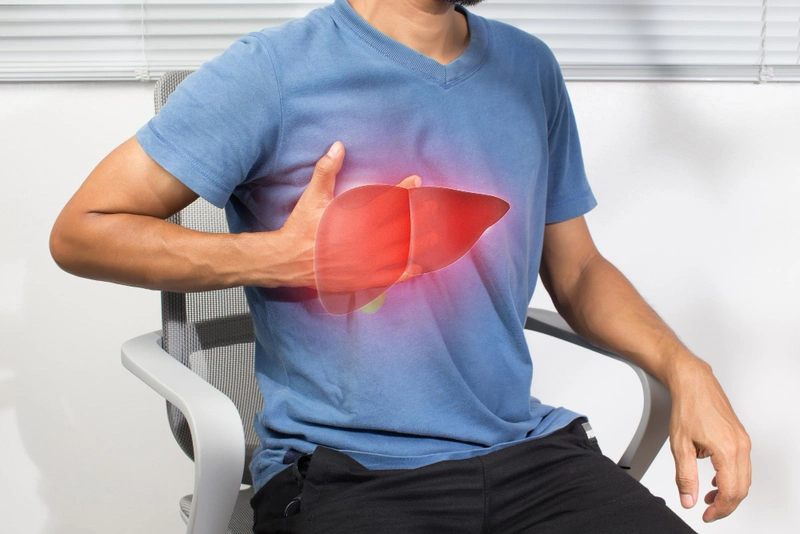- Published on: Sep 26, 2021
- 3 minute read
- By: Second Medic Expert
What Is The Meaning Of Pre-diabetic?
What is the meaning of pre-diabetic?
Pre-diabetes is the stage that comes before type 2 diabetes. If blood sugar levels are high but not yet high enough to be classified as type 2 diabetes, then you are pre-diabetic.
A person may have pre-diabetes if they find it hard to control their blood glucose levels.
It is important to note how long you have had this condition and what your other risk factors are like such as age, history of gestational diabetes, history of cardiovascular disease, family history (genetic heritability), obesity (BMI > 30), physical inactivity.
Pre-diabetic people tend to be insulin resistant or sensitive when they're not eating anything, and the fasting level is high at 138 mg/dl and when they're drinking glucose their fasting level goes up even more and after a meal, their blood sugar goes up higher than 140 mg/dl at least two times in 225.
Someone affected by pre-diabetes has an impaired ability to produce insulin, which is necessary to regulate glucose levels. This could lead to high blood sugar over time. People who are pre-diabetic may suffer from polycystic ovary syndrome (PCOS), normal aging or another illness that causes the pancreas to fail to work properly. A person suffering from pre-diabetes is suffering from high blood sugar levels. A person suffering from diabetes not Type 1 is suffering from high blood sugar levels.
Sometimes people are diagnosed with pre-diabetes instead of Type II Diabetes because it's more common in the population. Pre-diabetes occurs when the body cannot produce enough insulin or process glucose properly to regulate blood sugar, but that can be managed through diet and exercise in most cases.
Type I Diabetes is when a person cannot make any insulin at all, whereas type II might be caused by, for example, an unfortunate metabolic issue or lifestyle change like eating too many sweets or quitting smoking.
Pre-diabetic refers to a person who has blood sugar levels that qualify him or her as "pre-high blood glucose" but not high enough to be considered diabetic yet. Pre-diabetes is a temporary condition in which the body starts to develop insulin resistance, and the cells of your pancreas start secreting more and more of their own insulin to avoid producing too much glucose. Eventually, this becomes counterproductive, the pancreas becomes so resistant it can't keep up with demand anymore, and type 2 diabetes occurs. However, pre-diabetes does not require any treatment because by avoiding junk food and excessive portions (and exercising) you will likely get off pre-diabetics without ever developing diabetes. Pre-diabetes is a term to describe high blood insulin levels that are on the cusp of developing type 2 diabetes but haven't yet.
Type 2 diabetes develops when cells lose their insulin receptors and cannot create enough sugar for themselves. This means the body has to produce more and more insulin in order to get glucose into any cells with remaining insulin receptors (such as muscle or fat cells). Over time, high levels of circulating hormones lead to damage in the small vessels that provide oxygen and nutrients — particularly to kidneys — putting them at risk of failure. This can happen over decades and is referred to as "insulin resistance".
The primary goal for people suffering from pre-diabetes should be lifestyle change: reduce weight. Pre-diabetic means that you are at high risk for developing type 2 diabetes. If you're overweight, have a family history of diabetes, develop gestational diabetes while pregnant, or if it runs in your household then pre-diabetes is more likely to progress into type 2 diabetes.
Pre-diabetic means that a patient has been diagnosed as prediabetic – that is, their blood sugar levels are higher than normal but not yet high enough to be classified as having diabetes. People with pre-diabetes have a greatly increased risk of developing type 2 diabetes and cardiovascular disease. One study found that adults who had one or more characteristics of the metabolic syndrome exhibited a 46% reduction in risk for the development of diabetes over 4 years following blinded diagnosis if they took metformin therapy alone or with other agents, compared to those on placebo therapy. In addition, people with pre-metabolic syndrome specifically were found to have 89?creased risks for this development
The term pre-diabetic is typically applied to patients who have impaired glucose tolerance or who are at risk for developing type 2 diabetes. A patient is considered a pre-diabetic when he or she has high blood sugar levels that may lead to progression into full-blown diabetes, called Type 2 Diabetes Mellitus, but doesn't meet the diagnostic criteria for T2DM. In other words, the cells of this patient's body aren't quite as dysfunctional as those of a diabetic, yet they show signs of dysfunction. This stage falls between normal and diabetic and is sometimes referred to as prediabetes because it puts an individual at "risk" for T2DM development.
A pre-diabetic person is one who exhibits signs that they may be diabetic. The symptoms include stomach pains, frequent urination, and sudden weight loss. Pre-diabetes used to be known as age-related diabetes and are common in adults who are overweight and have high blood pressure or abnormal cholesterol levels. Early-onset of pre-diabetes can lead to both short-term and long-term risks including heart disease, strokes, kidney failure, blindness caused by diabetic retinopathy (Eye) as well as early death for people with type 2 diabetes.
Our Services
Request A Callback
Recent Posts
Habits That Silently Damage Your Liver
Aug 13,2025
How to Detect and Manage Early Diabetes at Home
Aug 12,2025
What Is Covered in Employee Wellness Plans?
Aug 11,2025
Top 5 Lab Tests You Can Book from Home in India
Aug 07,2025
Is Curd Good or Bad for Acidity?
Aug 02,2025










